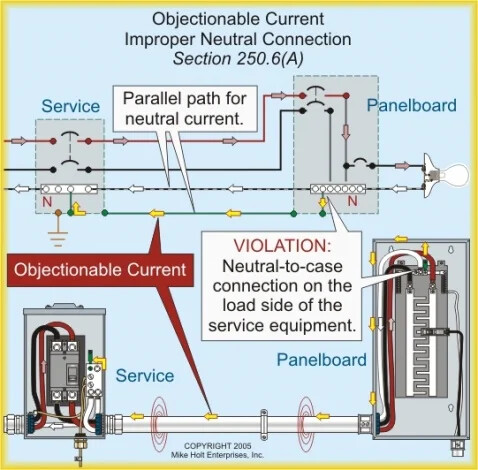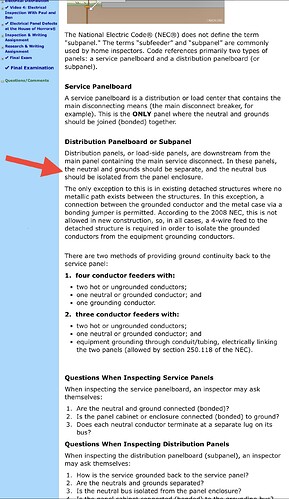Richard, I answered the student’s question. My answer was true and accurate. It’s information that you can stake your reputation on, unlike the InterNACHI electrical courses.
As for lecturing the teacher is concerned, I have. I went through the entire InterNACHI electrical course a few years ago and made corrections to it when I was in Boulder teaching the electrical course at the HOH for InterNACHI. I had put a lot of work into the project, more than a full week. I went through every sentence and every illustration making corrections.
The course was rife with errors. I gave all the edits to Ben Gromicko. Soon after that InterNACHI made some changes in personnel at the school, including replacing Ron Huffman with April Ware. April didn’t last long and they put Kim Stover in charge. The last I heard, Kim was gone and Ben took over running The school. I don’t know what happened to all the edits I did amid the chaos.
InterNACHI published another short electrical course more recently. It contained some particularly egregious errors on really basic stuff. Frankly, it was embarrassing. It was shameful.
Ben had commented in the forum that the staff wrote the course after I pointed out a couple of the egregious and inexcusable errors.
It is incomprehensible to me why anyone would have someone who is clearly not qualified write a course then publish it without having a subject matter expert review it first.
A lack of knowledge is not nearly as bad as going around thinking that you know what you are doing, and disseminating misinformation, because you are basing what you believe to be true on something you learned from what you believe to be a credible source.
I challenge you or anyone at InterNACHI to name one other member who has done as much as I have over the past 20 years to ensure that members get reliable and accurate information about electricity and electrical systems as I have done.
Most of my participation has been at live events and behind the scenes. All the while, though, I have monitored this forum. I frequently refrain from participating because it is my sincere belief that promoting code oriented discussions in favor of promoting basic understanding of electricity, electrical systems, and code theory ultimately does more harm than good.
During my 25 years as a home inspector, I also worked as a forensic electrical consultant and investigator. It is shameful that so many home inspectors are going around spreading misinformation and no HI industry leaders will step up and try to fix what is increasingly looking like it is hopelessly broken.
I have been asked far too many times insurance investigators and adjusters, and lawyers questions like”Why would he (a home inspector) say something like that? It’s embarrassing because most of them have known that I have taught electrical courses for well more than 40 years, including to home inspectors. For the last ten years all I’ve been able to do is shake my head and say “I don’t know”. The reality, however, is that I do know. I just don’t have the time or the energy to try to explain it every time I’m asked.
With respect to using accurate terminology, that’s a drum I’m been pounding right here in this forum for years.









